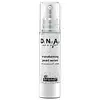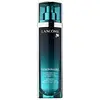What's inside
What's inside
 Key Ingredients
Key Ingredients

 Benefits
Benefits

 Concerns
Concerns

 Ingredients Side-by-side
Ingredients Side-by-side

Water
Skin ConditioningCaprylic/Capric Triglyceride
MaskingPropanediol
SolventGlycerin
HumectantPentylene Glycol
Skin ConditioningAlcohol Denat.
AntimicrobialPrunus Armeniaca Kernel Oil
MaskingPhenoxyethanol
PreservativeHydroxyethylpiperazine Ethane Sulfonic Acid
BufferingSodium Hydroxide
BufferingXanthan Gum
EmulsifyingSodium Hyaluronate
HumectantHydroxyethylcellulose
Emulsion StabilisingCarrageenan
Algin
MaskingDecarboxy Carnosine Hcl
Skin ConditioningSynthetic Fluorphlogopite
Butylene Glycol
HumectantSpilanthes Acmella Flower Extract
Skin ConditioningCI 77891
Cosmetic ColorantAlaria Esculenta Extract
Skin ProtectingGeranylgeranylisopropanol
Skin ConditioningSilica
AbrasiveMica
Cosmetic ColorantSodium Acetate
BufferingBHT
AntioxidantSodium Lauryl Sulfate
CleansingCellulose
AbsorbentCitrus Aurantium Dulcis Peel Oil
MaskingCitrus Aurantium Dulcis Fruit Extract
MaskingCananga Odorata Flower Oil
MaskingVanillin
MaskingLavandula Hybrida Oil
EmollientLitsea Cubeba Fruit Oil
MaskingVanilla Planifolia Fruit Extract
Skin ConditioningJasminum Sambac Flower Extract
MaskingTin Oxide
AbrasiveLimonene
PerfumingWater, Caprylic/Capric Triglyceride, Propanediol, Glycerin, Pentylene Glycol, Alcohol Denat., Prunus Armeniaca Kernel Oil, Phenoxyethanol, Hydroxyethylpiperazine Ethane Sulfonic Acid, Sodium Hydroxide, Xanthan Gum, Sodium Hyaluronate, Hydroxyethylcellulose, Carrageenan, Algin, Decarboxy Carnosine Hcl, Synthetic Fluorphlogopite, Butylene Glycol, Spilanthes Acmella Flower Extract, CI 77891, Alaria Esculenta Extract, Geranylgeranylisopropanol, Silica, Mica, Sodium Acetate, BHT, Sodium Lauryl Sulfate, Cellulose, Citrus Aurantium Dulcis Peel Oil, Citrus Aurantium Dulcis Fruit Extract, Cananga Odorata Flower Oil, Vanillin, Lavandula Hybrida Oil, Litsea Cubeba Fruit Oil, Vanilla Planifolia Fruit Extract, Jasminum Sambac Flower Extract, Tin Oxide, Limonene
Water
Skin ConditioningCyclohexasiloxane
EmollientGlycerin
HumectantAlcohol Denat.
AntimicrobialSodium Tetrahydrojasmonate
AbrasivePolysilicone-11
Octyldodecanol
EmollientHdi/Trimethylol Hexyllactone Crosspolymer
Dipropylene Glycol
HumectantBis-PEG/PPG-16/16 PEG/PPG-16/16 Dimethicone
EmollientCI 77891
Cosmetic ColorantMica
Cosmetic ColorantSecale Cereale Seed Extract
AbrasiveSodium Hyaluronate
HumectantHydroxyethylcellulose
Emulsion StabilisingPhenoxyethanol
PreservativeAdenosine
Skin ConditioningPoloxamer 338
EmulsifyingAmmonium Polyacryloyldimethyl Taurate
Emulsion StabilisingDimethicone
EmollientDimethiconol
EmollientPentylene Glycol
Skin ConditioningCaprylic/Capric Triglyceride
MaskingDisodium EDTA
Methyldihydrojasmonate
MaskingCitronellol
PerfumingInulin Lauryl Carbamate
Emulsion StabilisingParfum
MaskingWater, Cyclohexasiloxane, Glycerin, Alcohol Denat., Sodium Tetrahydrojasmonate, Polysilicone-11, Octyldodecanol, Hdi/Trimethylol Hexyllactone Crosspolymer, Dipropylene Glycol, Bis-PEG/PPG-16/16 PEG/PPG-16/16 Dimethicone, CI 77891, Mica, Secale Cereale Seed Extract, Sodium Hyaluronate, Hydroxyethylcellulose, Phenoxyethanol, Adenosine, Poloxamer 338, Ammonium Polyacryloyldimethyl Taurate, Dimethicone, Dimethiconol, Pentylene Glycol, Caprylic/Capric Triglyceride, Disodium EDTA, Methyldihydrojasmonate, Citronellol, Inulin Lauryl Carbamate, Parfum
Ingredients Explained
These ingredients are found in both products.
Ingredients higher up in an ingredient list are typically present in a larger amount.
Alcohol Denat. is an alcohol with a denaturant property. It is created by mixing ethanol with other additives.
This ingredient gets a bad rep because it is irritating and drying - mostly due to its astringent property. Astringents draw out natural oils in tissue, constricting pores and leaving your skin dried out.
However, alcohol denat. is not all that bad.
Due to its low molecular weight, alcohol denat. tends to evaporate quickly. One study on pig skin found half of applied alcohol evaporated in 10 seconds and less than 3% stayed on skin.
This also helps other ingredients become better absorbed upon application.
Studies are conflicted about whether this ingredient causes skin dehydration. One study from 2005 found adding emollients to propanol-based sanitizer decreased skin dryness and irritation. Another study found irritation only occurs if your skin is already damaged.
Small amounts of alcohol are generally tolerated by oily skin or people who live in humid environments.
The rule of thumb is if this alcohol is near the end of an ingredients list, it will probably not affect your skin much.
Also...
This ingredient has antimicrobial and solvent properties.
The antimicrobial property helps preserve products and increase their shelf life. As a solvent, it helps dissolve other ingredients.
Other types of astringent alcohols include:
Learn more about Alcohol Denat.This ingredient is an emollient, solvent, and texture enhancer. It is considered a skin-softener by helping the skin prevent moisture loss.
It helps thicken a product's formula and makes it easier to spread by dissolving clumping compounds.
Caprylic Triglyceride is made by combining glycerin with coconut oil, forming a clear liquid.
While there is an assumption Caprylic Triglyceride can clog pores due to it being derived from coconut oil, there is no research supporting this.
Learn more about Caprylic/Capric TriglycerideCi 77891 is a white pigment from Titanium dioxide. It is naturally found in minerals such as rutile and ilmenite.
It's main function is to add a white color to cosmetics. It can also be mixed with other colors to create different shades.
Ci 77891 is commonly found in sunscreens due to its ability to block UV rays.
Learn more about CI 77891Glycerin is already naturally found in your skin. It helps moisturize and protect your skin.
A study from 2016 found glycerin to be more effective as a humectant than AHAs and hyaluronic acid.
As a humectant, it helps the skin stay hydrated by pulling moisture to your skin. The low molecular weight of glycerin allows it to pull moisture into the deeper layers of your skin.
Hydrated skin improves your skin barrier; Your skin barrier helps protect against irritants and bacteria.
Glycerin has also been found to have antimicrobial and antiviral properties. Due to these properties, glycerin is often used in wound and burn treatments.
In cosmetics, glycerin is usually derived from plants such as soybean or palm. However, it can also be sourced from animals, such as tallow or animal fat.
This ingredient is organic, colorless, odorless, and non-toxic.
Glycerin is the name for this ingredient in American English. British English uses Glycerol/Glycerine.
Learn more about GlycerinHydroxyethylcellulose is used to improve the texture of products. It is created from a chemical reaction involving ethylene oxide and alkali-cellulose. Cellulose is a sugar found in plant cell walls and help give plants structure.
This ingredient helps stabilize products by preventing ingredients from separating. It can also help thicken the texture of a product.
This ingredient can also be found in pill medicines to help our bodies digest other ingredients.
Learn more about HydroxyethylcelluloseMica is a naturally occurring mineral used to add shimmer and color in cosmetics. It can also help improve the texture of a product or give it an opaque, white/silver color.
Serecite is the name for very fine but ragged grains of mica.
This ingredient is often coated with metal oxides like titanium dioxide. Trace amounts of heavy metals may be found in mica, but these metals are not harmful in our personal products.
Mica has been used since prehistoric times throughout the world. Ancient Egyptian, Indian, Greek, Roman, Aztec, and Chinese civilizations have used mica.
Learn more about MicaPentylene glycol is typically used within a product to thicken it. It also adds a smooth, soft, and moisturizing feel to the product. It is naturally found in plants such as sugar beets.
The hydrophilic trait of Pentylene Glycol makes it a humectant. As a humectant, Pentylene Glycol helps draw moisture from the air to your skin. This can help keep your skin hydrated.
This property also makes Pentylene Glycol a great texture enhancer. It can also help thicken or stabilize a product.
Pentylene Glycol also acts as a mild preservative and helps to keep a product microbe-free.
Some people may experience mild eye and skin irritation from Pentylene Glycol. We always recommend speaking with a professional about using this ingredient in your routine.
Pentylene Glycol has a low molecular weight and is part of the 1,2-glycol family.
Learn more about Pentylene GlycolPhenoxyethanol is a preservative that has germicide, antimicrobial, and aromatic properties. Studies show that phenoxyethanol can prevent microbial growth. By itself, it has a scent that is similar to that of a rose.
It's often used in formulations along with Caprylyl Glycol to preserve the shelf life of products.
Sodium Hyaluronate is hyaluronic acid's salt form. It is commonly derived from the sodium salt of hyaluronic acid.
Like hyaluronic acid, it is great at holding water and acts as a humectant. This makes it a great skin hydrating ingredient.
Sodium Hyaluronate is naturally occurring in our bodies and is mostly found in eye fluid and joints.
These are some other common types of Hyaluronic Acid:
Learn more about Sodium HyaluronateWater. It's the most common cosmetic ingredient of all. You'll usually see it at the top of ingredient lists, meaning that it makes up the largest part of the product.
So why is it so popular? Water most often acts as a solvent - this means that it helps dissolve other ingredients into the formulation.
You'll also recognize water as that liquid we all need to stay alive. If you see this, drink a glass of water. Stay hydrated!
Learn more about Water